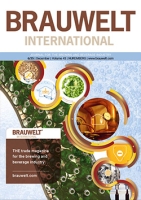This has been covered at length time and again; however, in purchasing and sales talks as well as in negotiations over contracts and specifications, one could come away with the impression that awareness of this topic is virtually non-existent in the industry.
Brewers in Germany are wondering why the national per-capita consumption of beer has declined 30 percent in the last twenty years even as consumption of alcoholic beverages, based on pure ethanol, has remained nearly constant. Could it be that German consumers are bored with beer, at least with the options they have? Despite an abundance of breweries and a rich brewing tradition, after all, commercial beers in Germany are becoming increasingly similar and interchangeable. Even in the U.S. craft brewers’ scene, the once-revered German beers, though still recognized for technical perfection, are gaining a reputation for uninspiring uniformity.
“Omics” technologies comprise genomics, transcriptomics, proteomics and metabolomics; the last three fields are pooled within the notion “functional genomics”. In this review, these techniques which concentrate on aspects of the “course from gene to metabolites” are surveyed especially with regard to bottom-fermenting brewer’s yeasts.
Gushing is one of the most unsolved problems in brewing. This is a very severe quality defect. Efforts are being made to reveal the identity of gushing components. The beer defect of gushing is a temporary brewery problem that is primarily caused by fungi derived factors. In this work the influence of humulones, pure linalool and hop oils on natural occurring gushing and an activated carbon (AC) induced gushing of commercial brews was tested. The experiments proved that linalool significantly reduces the gushing volume. Hop oils (linalool) decreased the gushing tendency of beer. Gushing, induced by activated carbon, is suppressed by the addition of linalool and humulones..
Primers for a loop-mediated isothermal amplification (LAMP) method to specifically identify beer spoilage caused by Lactobacillus spp. including Lactobacillus brevis, Lactobacillus lindneri, Lactobacillus backi and Lactobacillus paracollinoides were developed. These LAMP primer sets were designed from target sequences in the 16S rRNA gene or the spacer region. To identify beer spoilage strains in the species, we also developed a LAMP primer set to detect highly specific genetic markers. The LAMP primer sets in this study distinguished the target species or beer spoilage strains from other lactic acid bacteria in 40–60 min. Thus, the LAMP method may be useful for direct detection and identification of Lactobacillus spp. ....
In this work it was first shown how to quantify the gushing potential of malt with a modification of a common gushing test. Today there exist two acknowledged gushing tests for the brewing industry (Modified Carlsberg Test and Weihenstephaner Test). Both analytical methods use the overfoaming amount of a test-specific produced carbonated wort to determine the gushing potential of malt. Unfortunately the overfoaming amount can vary statistically in a way that this parameter can ¡°only¡± be used for qualitative information if the malt has a potential for gushing or not and if one malt has a higher or lower gushing potential than another one; but a precise quantitative comparison for example between two malts which both have a gushing potential is difficult..
Every year we monitor the situation concerning residues of harmful metals by screening hops immediately after harvest. In our investigations, all important European varieties from different growing areas are considered. To guarantee a representative analysis, ten samples of large lots are selected and then combined into one composite sample for each variety. The latest results for the 2009 crop are presented in the table. Metal analysis has been conducted at the “Research Center Weihenstephan”. All concentrations given are mg/kg.
In crop 2008 we showed the variations in the contribution of hop oils to beer depending on the crop year. As a representative hop aroma substance we have chosen Linalool, which correlates rather well with the sonsory impression of a hoppy aroma in beer.
The crop of spring barley this year was in many countries of the EU very good in quality and quantity.
We presented a first estimate of crop 2009 hop production at drinktec. At that time there was still some uncertainty regarding the actual crop size and alpha contents of crop 2009 hops. The figures are now clearer. Based on the updated crop size of 111.483 mt of hops there will be a total of approx. 9,942 mt of alpha acid available for the coming year.


